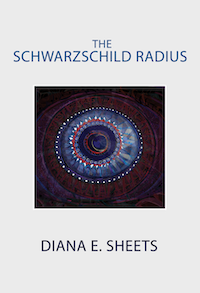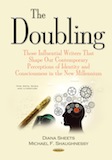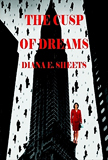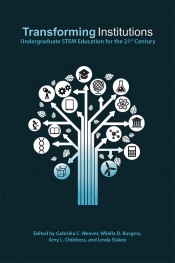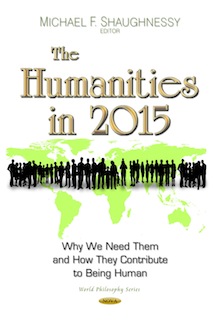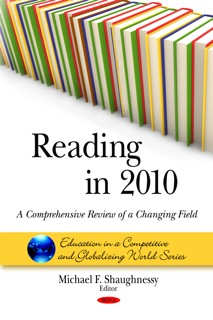Solzhenitsyn, Truth, & the Dismal Fate of Literature in the 21st Century, Part II
Copyright © 2009 by Diana E. Sheets
For my entire life I have had the soil of my homeland beneath my feet. Only its pain do I hear, only about it do I write. (Christopher Moody, Solzhenitsyn, Barnes & Noble Books, 1976, 36)
Autobiographical stories for Solzhenitsyn were important only in so far as they illuminated a larger societal narrative. Too often, he felt, memoirs were “a product of narcissism on the part of the author,” a failure on the writer’s part to encapsulate these memories into “an artistic generalization of what he has observed” (Michael Scammell, Solzhenitsyn, Hutchinson, 1985, 389, citing recollections from Natalia Reshetovskaya, Solzhenitsyn’s first wife, in Sanya: My Life with Alexander Solzhenitsyn, trans. by Elena Ivanoff, Bobbs-Merrill, 1975, 224-5). Thus while Solzhenitsyn was initially attracted to the Ukrainian novelist Konstantin Paustovsky, he became disenchanted with the author’s five-volume autobiography The Tale of Life (serialized from 1946-1962), commenting that it “threatens to occupy two out of the seven volumes of his collected works.” More importantly, he felt that Paustovsky failed to illuminate the catastrophic circumstances shaping Soviet history “in an epoch when one cannot help finding one’s theme” (Scammell, 389, citing Reshetovskaya, 224).
Solzhenitsyn was sufficiently distressed that memoir threatened to eclipse meaningful fiction that he wrote “An Epidemic of Autobiographies” (1960), an essay in which he opined, “Why does a writer who is capable of creating need to write a simple autobiography?” He concluded, “Isn’t it about time that at least magazine publishers put a stop to this epidemic of autobiographies?” The essay was submitted to several journals before Solzhenitsyn had achieved national fame. It was never published (Scammell, 389-90, citing Reshetovskaya, 224-5).
On the occasion of his second and last meeting with the renowned poet Anna Akhmatova, Solzhenitsyn scolded her on the personal nature of “Requiem,” her famous cycle of poems memorializing her grief for the loss of a son during Stalin’s purges: “It’s a pity your verses are always about one person’s destiny.” She replied, “Do you mean to say you can’t convey the destiny of millions by describing the fate of a single person?” Akhmatova then pointed out that her epilogue extended the meaning to apply to the millions who died (Scammell, 447, citing Lydia Chukovskaya’s report of the meeting).
Indeed, Solzhenitsyn never regarded The Oak and the Calf (trans. Harry Willetts, Harper & Row, Publishers, 1980), strictly speaking, as autobiography. Rather, it presents his interpretation of his motives and efforts between 1961 and 1974 to outwit and outflank Soviet authorities, thereby ensuring that his stories would be published. Later, he published Invisible Allies (trans. by Alexis Klimoff and Michael Nicholson, Counterpoint, 1995), which pays homage to his supporters who risked their lives between 1965 and 1974 typing or hiding or distributing his manuscripts among friends or via the clandestine samizdat network, as well as those individuals who helped him gather material or smuggle microfilmed copies of his books to the West.
The title “The Oak and the Calf” refers to a Russian proverb in which a calf (doubling as Solzhenitsyn) continuously butts its head against a large oak tree (a.k.a. the Soviet regime). Again and again the author does battle with authorities. On
Solzhenitsyn maintained a combative position with respect to Soviet authorities, a ferocious battle between adversaries that J.M. Coetzee contends extends well beyond Scammell’s David and Goliath metaphor (Scammell, 538). For Solzhenitsyn was, Coetzee suggests, “a formidable polemist and political in-fighter,” regularly testing the bounds of the permissible. For this reason Coetzee rejects the Oedipal model invoked by a David and Goliath metaphor. Instead, he favors a brother-brother mode of “imitative desire leading to rivalrous conflict and loss of difference,” a perspective borrowed from René Girard, in which well-matched adversaries battle for control (Giving Offense: Essays on Censorship, The University of Chicago Press, 1996, 117-19, 138). While Coetzee’s argument minimizes the role the West played in strengthening Solzhenitsyn’s hand, it does highlight the extent to which the Liberal’s celebration of victimhood in its literary heroes dies hard with Solzhenitsyn. Never was there a writer more ill-suited to the feminized analogy of the vulnerable, effete artist. Rather, Solzhenitsyn’s strategy for courting the West was calculated to elicit the support of America, the protagonist in the Cold War, while appealing—as did Boris Pasternak a few years earlier and Joseph Brodsky some years later—to the Swedish penchant for awarding Nobel prizes to writers advancing the cause of freedom.
The Liberal’s infatuation with Solzhenitsyn had already begun to sour prior to his expulsion to the West in 1974. With the publication of August 1914, the first of The Red Wheel Series, reviews were critical. (Initially published in Russian in
Nor was Williams alone in his disappointment. August 1914, as American novelist and critic Mary McCarthy noted, offended Liberal sensibilities. It was patriotic and nationalist while implicitly Christian in disposition. It eschewed revolutionary sentiments and was dismissive of “a whole category of society: the ‘liberals’ and ‘advanced circles’ of 1914, those who opposed the war and patriotic sentiments, who yearned, they thought, for revolution, despised religion, authority, tradition, anything respected and handed down” (“The Tolstoy Connection,” Aleksandr Solzhenitsyn: Critical Essays and Documentary Materials, eds. John B. Dunlop, Richard Haugh, and Alexis Klimoff, Nordland Publishing Company, 1973, 334-5).
August 1914 and The Red Wheel Series overall eschewed romantic “love triangles” in favor of historic and literary analysis. Solzhenitsyn blamed every element of Russian society for the collapse, suggesting that “everyone was at fault, including the ordinary people, who easily fell for the cheap infection, the cheap trick, and rushed to loot, to kill, rushed to join the bloody dance. But the guiltiest of all, of course, were those in charge” (Solomon Volkov, The Magical Chorus, trans. by Antonina W. Bouis, Alfred A. Knopf, 2008, 282). This storytelling approach and its implicit societal critique were unlikely to win support in Liberal, radical, and feminized circles both at home and abroad. However, even some Conservatives, such as Norman Podhoretz, although strongly sympathetic to Solzhenitsyn’s nonfiction, were antagonistic to August 1914. The novel, Podhoretz suggested, “is, to put it plainly, dead from beginning to end. Neither the fictional nor the historical personages are truly realized, and though the combat scenes are scrupulously rendered, they remain staged set-pieces with no power to arouse the emotions or draw the reader in.” He concluded, dismissively, “Solzhenitsyn is not a true novelist. . . .” (“The Terrible Question of Aleksandr Solzhenitsyn,” Commentary, February, 1985, 20-1).
However, what critics failed to acknowledge was the longstanding tradition of the Russian novel, fully grounded in historical realism, to pass judgment on the nature and destiny of the nation. For as Alexis Klimoff pointed out, “the great Russian prose writers of the [nineteenth] century took pride . . . that their works addressed and reflected the actual historical, social, or moral conditions of their homeland. Literary achievement was not seen in the ability of a powerful imagination to create a vivid fictional world ex nihilo, but rather in the writer’s skill in selecting, shaping, and ordering the data of reality. . . .” (The Solzhenitsyn Reader, xxx, citing a passage by Alexis Klimoff from his essay, “The Sober Eye: Ivan Denisovich and the Peasant Perspective,” One Day in the Life of Ivan Denisovich: A Critical Companion, ed. Alexis Klimoff, Northwestern University Press, 1997, 6-7). Indeed, as Andrej Kodjak suggested, “Russians regard literature, not just as a source of entertainment or aesthetic pleasure, but rather as an open forum for the most serious discussion of social ills, the destiny of the nation, and the goals and aspirations of their nation and mankind” (Alexander Solzhenitsyn, Twayne Publishers, 1978, 21).
Consequently, Nobel-prize winning poet Czeslaw Milosz indicated that if a Russian reader were introduced to Solzhenitsyn’s fiction in the sixties or seventies, he or she would ask, “Is he telling the truth?” By contrast, a Western reader would shrug his or her shoulders, feeling these works bore “too many marks of the nineteenth century” (“Questions,” Aleksandr Solzhenitsyn: Critical Essays and Documentary Materials, 450).
Only realism, according to Milosz, enables the reader to conceptualize the story with respect to the world. George Lukács saw Thomas Mann as the last great realistic writer in the West. His novel The Magic Mountain empowers readers to draw parallels between the story’s sanitarium and German society, Lukács suggested, just as Solzhenitsyn’s novels The First Circle and Cancer Ward, respectively, engage the reader with life in the U.S.S.R. by means of stories about the Gulag or the treatment of cancer patients in a hospital (see George Lukács, Solzhenitsyn, The M.I.T. Press, 1971). The decision by the West to repudiate literary realism, Milosz argues, diminished the novel’s ability to depict the world since “only a clearly delineated human form enables us to distinguish between the real and the unreal” (449). The retreat from reality and truth caused heroes to migrate from literary fiction to fantasy, whether Frodo Baggins in J.R.R. Tolkien’s The Trilogy of the Rings (450) or, Literary Gulag contends, Harry Potter in the recent 7-book series by J.K. Rowling that reflects our feminized, child-obsessed culture today.
The extent to which “the destiny of the nation” is highlighted in Solzhenitsyn’s writings is evident in his Nobel lecture. Awarded the prize in 1970 “for the ethical force with which he has pursued the indispensable traditions of Russian literature” (The Solzhenitsyn Reader, 512), Solzhenitsyn discusses the potential of literature to foster the linguistic and social consciousness of a nation. “In this way literature becomes the living memory of a nation. It sustains within itself and safeguards a nation’s bygone history—in a form which cannot be distorted or falsified. In this way does literature together with language preserve the national soul” (520).
The responsibility of the writer “in this cruel, dynamic, explosive world which totters on the brink of destruction” is to bear witness. For no writer stands apart from the actions of his nation or its citizenry. For this reason “if the tanks of his fatherland have bloodied the pavement of a foreign capital, then rust-colored stains have forever bespattered the writer’s face. And if on some fateful night a trusting friend is strangled in his sleep—then the palm of the writer bears the bruises from that rope.” The hope of mankind is world literature “as one great heart which beats for the cares and woes of our world, though each of these is manifested and perceived in its own way in its separate corner of the globe.” Violence is aided and abetted by the lie. The writer is morally obligated to reveal this falsehood, thereby acting as an agent for good against the forces of tyranny (523-4, 526).
In the twenty years that Solzhenitsyn remained in exile, no lecture was received more critically nor held greater significance than his commencement address “A World Split Apart” given at Harvard in 1978 (561). Indeed, Michael Novak suggests that the text is “the most important religious document of our time” (“On God and Man,” Solzhenitsyn at Harvard: the Address, Twelve Early Responses, and Six Later Reflections, Ethics and Public Policy Center, 1980, 131). Richard Pipes distills the essence of Solzhenitsyn’s argument to the following. We are corrupt. Humanism and the Enlightenment destroyed truth and replaced it with the pernicious fallacy of our perfectibility, which has led to the “cult of earthly well-being.” Irreligious socialism from the West permeated
The West’s greatest failure, Solzhenitsyn suggests, is “the decline of courage” (Novak, 131). With
The Liberal press, led by The New York Times, responded to Solzhenitsyn’s Harvard address with hyperbolic scorn: “he believes himself to be in possession of The Truth and so sees error wherever he looks. The True Believer views the world as a conflict between light and darkness, God and the Devil” (“The Obsession of Solzhenitsyn,” reprinted in Solzhenitsyn at Harvard, 23). But as George Will observed, Solzhenitsyn’s views, although “unmodern, even anti-modern . . . are broadly congruent with the ideas of Cicero and other ancients, and those of Augustine, Aquinas, Richard Hooker, Pascal, Thomas More, Burke, Hegel and others” (“Solzhenitsyn’s Critics,” Solzhenitsyn at Harvard, 34). Solzhenitsyn’s address, like Tocqueville’s, was delivered as a friend. He wished to counsel
Which brings us back to The Red Wheel, Solzhenitsyn’s four knot series chronicling the collapse of Tsarist Russia and the concomitant rise of Soviet Communism. The title, he suggested, is symbolic. “Revolution is an enormous cosmic Wheel, like a galaxy . . . that begins unfolding—and all the people, including the ones that started it turning, become grains of sand. And they die there in multitudes” (Volkov, 281-2).
The historical four-volume epic that describes the revolutionary cataclysm leading to Soviet rule was conceived by Solzhenitsyn in 1937 when he was an eighteen-year-old student. It was, he suggested, “the chief artistic design of my life” (The Solzhenitsyn Reader, 308). And, from his perspective, the dominant leitmotif of the twentieth century or, as The Solzhenitsyn Reader characterizes Solzhenitsyn’s interpretation of the event, “the decisive turning point from which so many of its other evils flowed” (308).
The Red Wheel serves as a melodic counterpoint to both Tolstoy’s philosophic fatalism and Marxist-Leninist historical inevitability. For Solzhenitsyn, the triumph of Bolshevism in the October Revolution of 1917 was preventable (308-9). The Red Wheel is revisionist history in the guise of a novel, an argument decrying the failure of human agency to resist the forces of Soviet tyranny.
But what of the narrative? August 1914 has as its focal point the defeat of Russia by the Germans at the Battle of Tannenberg (1914). For Solzhenitsyn, this paved the way for the downfall of Tsarist Russia and the ensuing catastrophe of Soviet Rule. August 1914 is a searing indictment of
The second knot, November 1916 (Published in Russian in 1983, later trans. by H.T. Willetts and published in English by Farrar, Straus and Giroux in 1999), is deceptively quiescent and markedly Christian in tenor. On display is the spectrum of political perspectives embodied in the resistance versus revolutionary dichotomy. Lenin is portrayed as a disheartened revolutionary exiled in
Knot 3 and 4, respectively, March 1917 and April 1917, have yet to be published in English, although excerpts appear in The Solzhenitsyn Reader. The final two volumes convey the chaos and destruction brought about by the February Revolution of 1917. (February, that is, based on the Russian calendar. The Western calendar dates the event in March.) For Solzhenitsyn this revolution was the decisive event in twentieth-century Russian history, a testimony to the failure of the liberals and socialists in the Duma and the Provisional Government to resist the tyranny of the Bolsheviks (The Solzhenitsyn Reader, 315-6).
The Red Wheel, as with The First Circle, Cancer Ward, and The Gulag Archipelago, is polyphonic storytelling in the tradition of Dostoevsky. Consequently, the narrative consists not of one story with “a multitude of characters and fates in a single objective world, illuminated by a single authorial consciousness.” Instead, a “plurality of consciousness” is invoked in which multiple characters, each “with equal rights and each with its own world,” combine to form a novel in which multiple stories “are not merged” with each other and maintain a measure of independence from the author (Mikhail Bakhtin, Problems of Dostoevsky’s Poetics, ed. and trans. by Caryl Emerson, Theory and History of Literature, Vol. 8, University of Minnesota Press, 1984, 6-7) while immune to the relativistic and subjective tenets of postmodernism.
This polyphonic epic, totaling some six-thousand-page pages, which Solzhenitsyn labored on for eighteen years, is operatic in sensibility. Indeed, as Volkov suggests, “Solzhenitsyn manipulates the narrative rhythm, constantly changing it, juxtaposing contrasting sections and small episodes. The result is musical prose, comparable not to War and Peace . . . but to the operas of Mussorgsky or Rimsky-Korsakov” (282).
The Red Wheel advanced beyond the conventions of realistic nineteenth-century fiction. Linguistically, Solzhenitsyn sought to bring his literary style closer to the “true Church Slavonic and Old Russian roots.” In August 1914 he invoked arcane words and introduces neologisms (Scammell, 789). “The best thing about the novel,” one reader noted, “is the language—extraordinarily vivid, condensed, full of surprises, new word formations that enrich our literature and go to make up Solzhenitsyn’s unique style.” He added, “Whatever else you may say . . . , Solzhenitsyn’s takes the Russian language further forward than any other writer has managed to do this century” (789, quoting from Zhores A. Medvedev, Ten Years after Ivan Denisovich, translated by Hilary Sternberg, Alfred A. Knopf, 1974, 157-8).
Syntactically August 1914 borrowed from Evgeny Zamyatin’s novel We in an effort to compress the texture and the breadth of the language. Solzhenitsyn made ample use of proverbs, vernacular usage, and provincial idioms inspired by years of study devoted to Vladimir Dahl’s Explanatory Dictionary of the Live Great Russian language (1863-6). He interspaced realism with cinematic passages and newspaper-inspired montages brimming with headlines, advertisements, proverbs, and street propaganda, borrowing from the techniques employed by Dos Passos in 1919. However, Solzhenitsyn’s approach was more literal, attempting to duplicate the movie-going experience (Scammell, 391-2, 789-90).
In the aftermath of the Cold War, Solzhenitsyn’s writings hold an uneasy place in America’s affections. If One Day in the Life of Ivan Denisovich, The First Circle, Cancer Ward, and The Gulag Archipelago were initially celebrated for their anti-Soviet revelations, they were never fully appreciated for their literary or innovative qualities. Yet, as Michael Scammell suggests, the impact of One Day in the Life of Ivan Denisovich for Russian readers was mesmerizing.
What I most remember from my first reading of “One Day in the Life of Ivan Denisovich” . . . isn’t just the feeling that its author had miraculously circumvented the censors, but the thrill of confronting an astonishing stylistic tour de force. Here was a realistic story of labor camp life, based on Solzhenitsyn’s own eight years in various camps, that leapt off the page in a living idiom that in places was racy to the point of obscenity, an unheard-of phenomenon in published Soviet literature and rare in Russian literature of any period. The language was rich in folk idioms and allusions, and laced with ingenious neologisms. Their effect . . . can be summed up in a probably apocryphal remark attributed to Anna Akhmatova: “Oh my God, socialist realism has found its genius.” (“Solzhenitsyn the Stylist,” The New York Times Book Review, August 31, 2008, 23)
The Red Wheel—staunchly Russian in its scope and sentiments, demanding in its polyphonic chorus, mesmerizing in its linguistic cadence, and unflinching in its cinematic realism—harkens back to the great works of the nineteenth century while marching relentlessly through the ideological and political battlefields of the twentieth century. It deserves, like its author, a critical reassessment free of postmodern cant and frou-frou interiority. Let us hope that the final two knots of The Red Wheel—March 1917 and April 1917—will be translated into English. And that those readers who still hunger for The Truth will dwell upon Solzhenitsyn’s stories.


